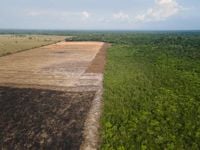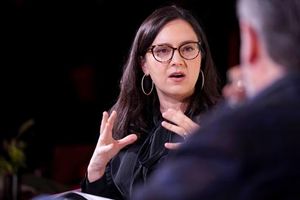As the world’s attention turns to Belém, Brazil, for the COP30 climate summit this November, the Amazon rainforest—often referred to as “the lungs of the planet”—finds itself at the center of a heated global debate. Brazil, in collaboration with India, Italy, and Japan, has announced a bold new pledge: to quadruple global sustainable fuel use by 2035. According to CleanTechnica, this ambitious target, unveiled on October 24, 2025, calls for more than doubling the use of biofuels worldwide. The move is intended to accelerate the transport sector’s shift away from fossil fuels, a goal that on its face seems both urgent and commendable.
But beneath the surface, environmental advocates and industry experts are warning that such a massive expansion, if not carefully managed, could have disastrous consequences for both ecosystems and the climate. The International Energy Agency (IEA) has stated in its latest report that doubling biofuels should not involve any increased land expansion for crop cultivation. However, this crucial caveat is conspicuously absent from the new pledge, raising alarms among those who remember the painful lessons of the past.
The history of biofuels is littered with unintended consequences. When the European Union set aggressive targets for biofuel use back in 2009, the lack of safeguards led to a surge in palm oil imports. According to CleanTechnica, palm oil quickly became one of the largest sources of biofuels in Europe, peaking at over four million tonnes. The environmental cost was staggering. The world watched in horror as tropical forests in Southeast Asia were razed, wildfires raged, and orangutans were driven from their habitats—all to satisfy the demand for this so-called “miracle oil.” The tragic irony? From 2010 to 2019, the EU’s consumption of palm oil biofuels generated more than 300 million tonnes of CO2 equivalent—triple the emissions that would have come from burning an equivalent amount of fossil fuels, thanks to the deforestation it caused.
It took nearly a decade of campaigning by environmental groups before the EU changed course, declaring in 2019 that palm oil would no longer count as a sustainable biofuel by 2030. Some countries have already enshrined this into national law, but the environmental damage was already done. The biofuels industry, meanwhile, simply shifted its appetite to other crops—many of which are central to Brazil’s own bioeconomy strategy.
Brazil is no stranger to the biofuels game. As the world’s second-largest producer, behind only the United States, the country has long relied on crops like sugarcane, corn, and soy to power its biofuels sector. Its flagship policy, RenovaBio, has helped fuel this growth, making biofuels a key component of national economic development. But this expansion is not without cost. These crops require vast tracts of land and enormous amounts of water, putting pressure on ecosystems and threatening food security as farmland is diverted from food to fuel.
According to CleanTechnica, global biofuels production already occupies an area roughly the size of Italy, yet supplies just 4% of global transport energy. Doubling that supply, as called for in the new pledge, risks even more land being converted—land that could otherwise store carbon, support biodiversity, or feed people. Compounding the problem, at current production rates and when accounting for the full supply chain and indirect land-use changes, biofuels emit on average 16% more CO2 than fossil fuels. The worst offenders? Biofuels made from palm and soy, which are linked to deforestation and peatland loss.
Brazil’s recent decision to lift its longstanding moratorium on soybean expansion, a policy once credited with slowing Amazon deforestation, has only heightened concerns. As CleanTechnica puts it, this is a stark reminder of how quickly climate policy can backslide when economic pressures mount. The Amazon, already under threat, could face even greater risks if biofuel expansion proceeds without strict safeguards.
It’s not just environmental groups sounding the alarm. Investors are also taking notice. On October 20, 2025, thirty-three investment firms managing over $3 trillion endorsed the Belém Investor Statement on Rainforests, according to a recent report. Their message is clear: COP30 must commit to ending deforestation by 2030 if there is any hope of preventing further ecosystem loss. The statement highlights that one third of preindustrial forest cover has already been lost, with another third degraded—mainly due to industry and agriculture. The investors warn that exposure to commodities produced on deforested land creates material risks for global investment portfolios, and they are pledging to select business partners who prioritize the minimization and eventual eradication of deforestation.
“We’re drawing nearer to ecological tipping points that will cause global and irreversible damage once crossed,” the investor statement reads. Experts warn that the Amazon Dieback Tipping Point—when the rainforest can no longer sustain itself and begins to collapse—could be triggered if deforestation reaches 20-25%. Currently, 14-17% of the Amazon has already been cleared, with another 17% degraded. The stakes could hardly be higher: the Amazon alone produces rain that waters fields as far away as North America, and its collapse would have cascading effects on global weather patterns, agriculture, and human migration.
Meanwhile, in Europe, regulatory efforts to combat deforestation are meeting resistance from industry groups worried about the practicalities of compliance. The Food Chamber of the Czech Republic and the Association of Czech Traditional Trade warned in an October 24 press release that postponing the European Union’s new regulation against deforestation—set to take effect on December 30, 2025—could lead to supply chain collapses and product shortages. The regulation requires sellers to verify that products like livestock, cocoa, coffee, palm oil, soy, wood, and rubber are not linked to deforestation. Companies must collect and report the coordinates of the land where these commodities are produced, inputting millions of item numbers into an EU information system. According to the Food Chamber, generating a single geolocation code takes about ten minutes, and the system is unstable, making real-time compliance nearly impossible.
“Brussels officials are fatally detached from market reality, and their approach will put thousands of EU small and medium-sized enterprises, which form the backbone of supply chains, in trouble,” said Dana Večeřová, president of the Food Chamber. Pavla Březiny, chairman of the Association of Czech Traditional Trade, added, “In stores, there may be empty shelves for selected commodities.” The Food Chamber is preparing an open letter to Members of the European Parliament urging them to reject the current proposal, and they demand that the future government clearly oppose the regulation. Concerns about excessive bureaucracy, increased costs, and disruptions to the supply of beef, chocolate, and other foods have also been echoed by farmers and traders. Czech Minister of Agriculture Marek Výborný stated in August that the system is not yet functional, and if it remains so, producers should not be burdened by it.
Amid these competing pressures—climate urgency, economic interests, and regulatory challenges—the path forward is anything but simple. Solar power, as CleanTechnica notes, can generate the same energy as biofuels using just 3% of the land, offering a compelling alternative that preserves more space for food production and biodiversity. As COP30 approaches, Brazil and the world face a defining choice: will the push for sustainable fuels protect the planet, or will it repeat the mistakes of the past and sacrifice the very forests we need to survive?
The stakes are clear, the warnings dire, and the world is watching. The decisions made in Belém this November could shape the fate of the Amazon—and the global climate—for generations to come.





